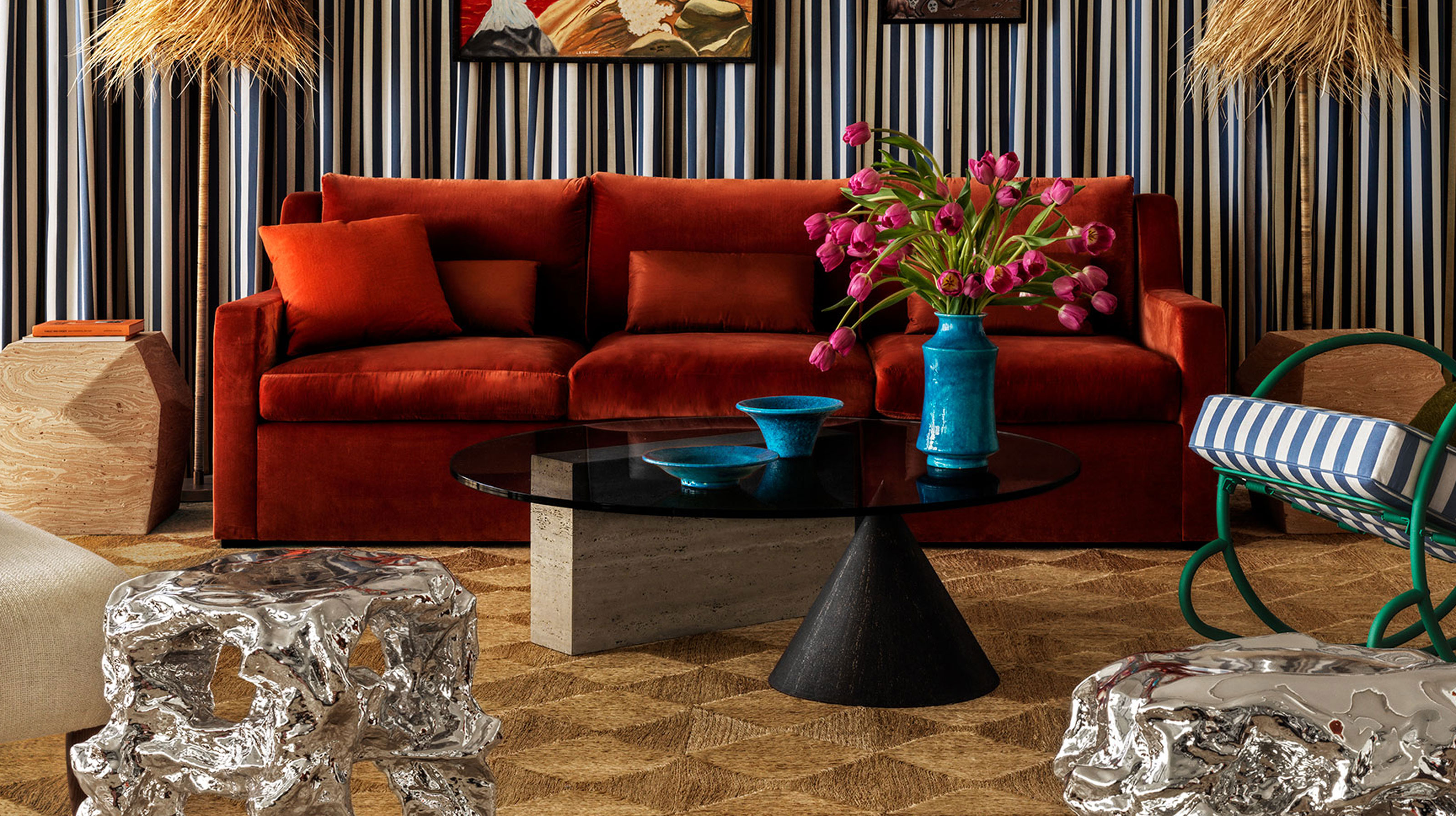
When it comes to picking a table for your 2025 decorating schemes, all you need is a good pair of legs. The designs Livingetc's editors are seeing in the most interesting modern schemes are like a balancing act — simple tabletops propped up by sculptural forms, making this element the standout of the piece.
For designers, it's an idea that brings an artistic quality to their spaces. "The exploration of materiality and form through table bases is definitely a trend that's gaining traction in current design," interior designer Greg Natale tells us. "It offers a way to add depth and character to minimalist interiors without overwhelming them."
While this interior design trend feels very of-the-moment, it's something that has its roots in a movement that started in the late 70s, into the 1980s. "Clients are craving less angular and more approachable shapes," designer Jen Talbot agrees. "The shapes harken to eras like the 80s, but an updated version and more classic in design. Clients are wanting something fresh and original and the line of furniture is one way to achieve that."
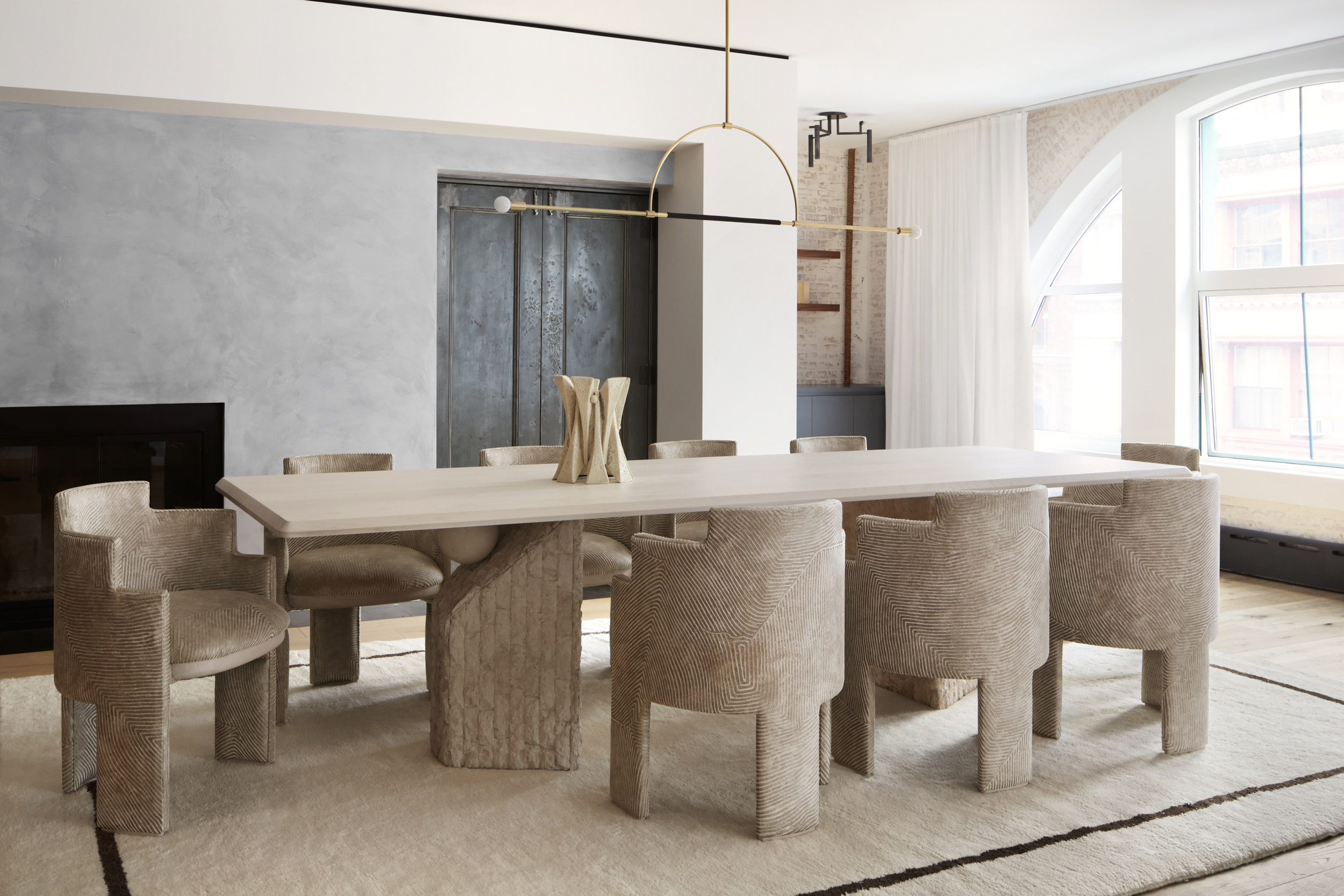
These pieces channel the theatricality and exaggeration of post-modernist furniture — exploring an irreverence and wit in the design, while drawing on graphic shapes such as cones and spheres. "There's certainly an influence in the resurgence of post-modernism, where designers began to move away from purely functional forms and embrace the play of materiality, texture, and shape," designer Greg Natale tells us.
Classic designs, such as Massimo & Lella Vignelli's Metafora coffee table for Casigliani, as seen on 1stDibs, are the perfect iteration of the idea — sheets of glass balanced on a variety of sculptural stone forms — and they're still used today. "There's a classical element to the pillar-like travertine and conical base design, as well as modernism to the clean lines and restrained color palette," says Greg. "They're versatile pieces because of the amalgamation of references, and the ability to transcend trends that makes them timeless."
"There's an influence of postmodernism, where designers began to embrace the play of materiality, texture, and shape."
Greg Natale, Interior Designer
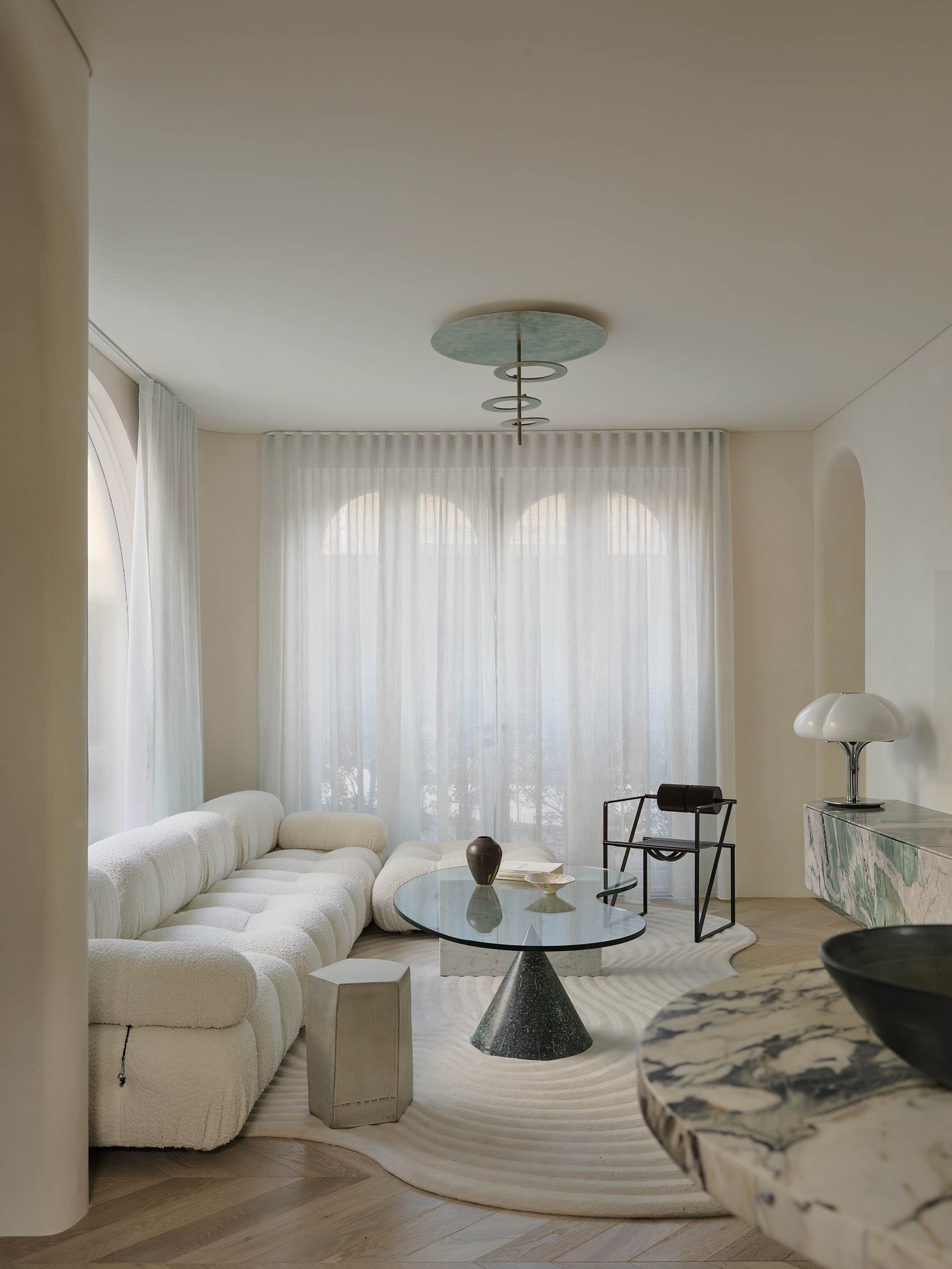
Greg employed furniture ideas such as these in the project, pictured above, across the living room and dining room to capture a sense of lightness in the design. "It was important to the owner that her new home felt beautiful and serene, so the aim was to create luminous, airy spaces that feel almost ethereal, and glass surfaces like this one help reflect light around the room for a glowing effect," Greg says.
"The glass coffee table's base is comprised of a Verdigris patina cone and a rectangular block of natural stone that creates this captivating illusion of suspension," the designer adds. "I love the playfulness of the simple geometric forms that make up the base and the freedom to place each shape how you see fit."
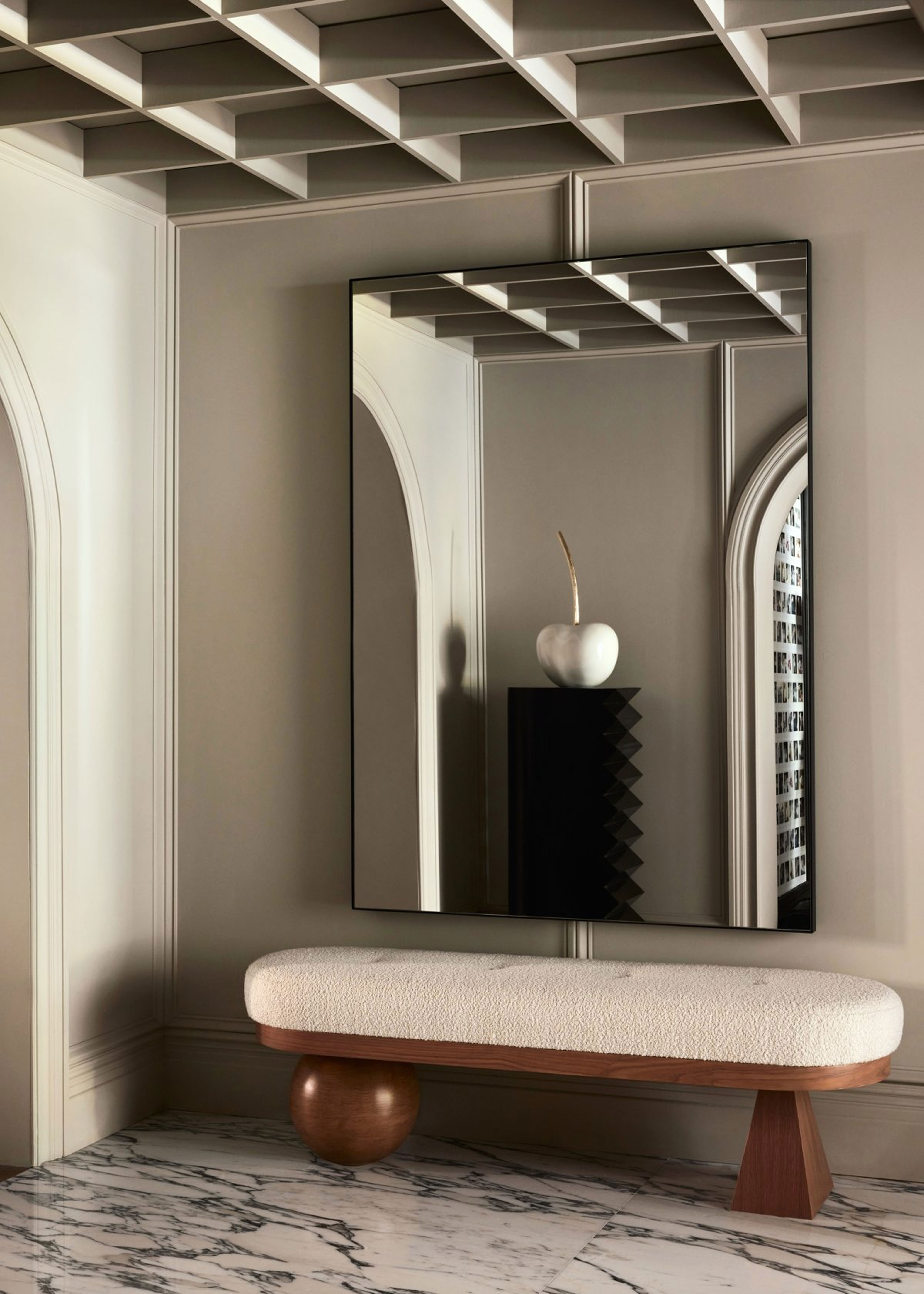
Contemporary designers are also drawing on these references for new furniture designs. In the entryway above, New York-based interior designer Crystal Sinclair chose an entryway bench from fashion designer Christian Siriano's home range, which draws on these sculptural, post-modern bases across seating and tables.
But while it's a design trend that feels elegantly elevated, we're seeing it filter down into more affordable stores, too, making it easier for everyone to embrace this style of furniture to some degree.
Our favorite post-modern inspired designs
Price: $1,048.60
This small coffee table from Anthropologie captures the spirit of the trend, with an even more playful appeal.
Price: $329
Stacked volumes, in almost-totemic styles, are another take on the trend, and this marble-print concrete side table makes it affordable.
Price: From $22,319
This table from The Invisible Collection may have a hefty price tag, but its beautiful silhouette makes it an unforgettable piece.
Price: $548
An interesting sculptural insert into this oak side table offers a fresh take on the trend.
Price: $4,275
Sphere coffee tables are a huge trend in themselves, and this design from Kathy Kuo brings an organic quality to the idea.
Price: $319
This fun side table introduces the idea as a subtler detail for a designer look that belies its price tag.
Price: $1,498
With its clean geometric lines and conical leg, this Lulu & Georgia coffee table has all the makings of a post-modern classic.
Price: $499
Consider other 'balanced' bases for coffee tables that bring the same sense of lightness and irreverence.
Price: $4,495
A modern classic, this Soho Home table has plenty of cool, sculptural appeal for a luxe living room.
An evolution of the trend?
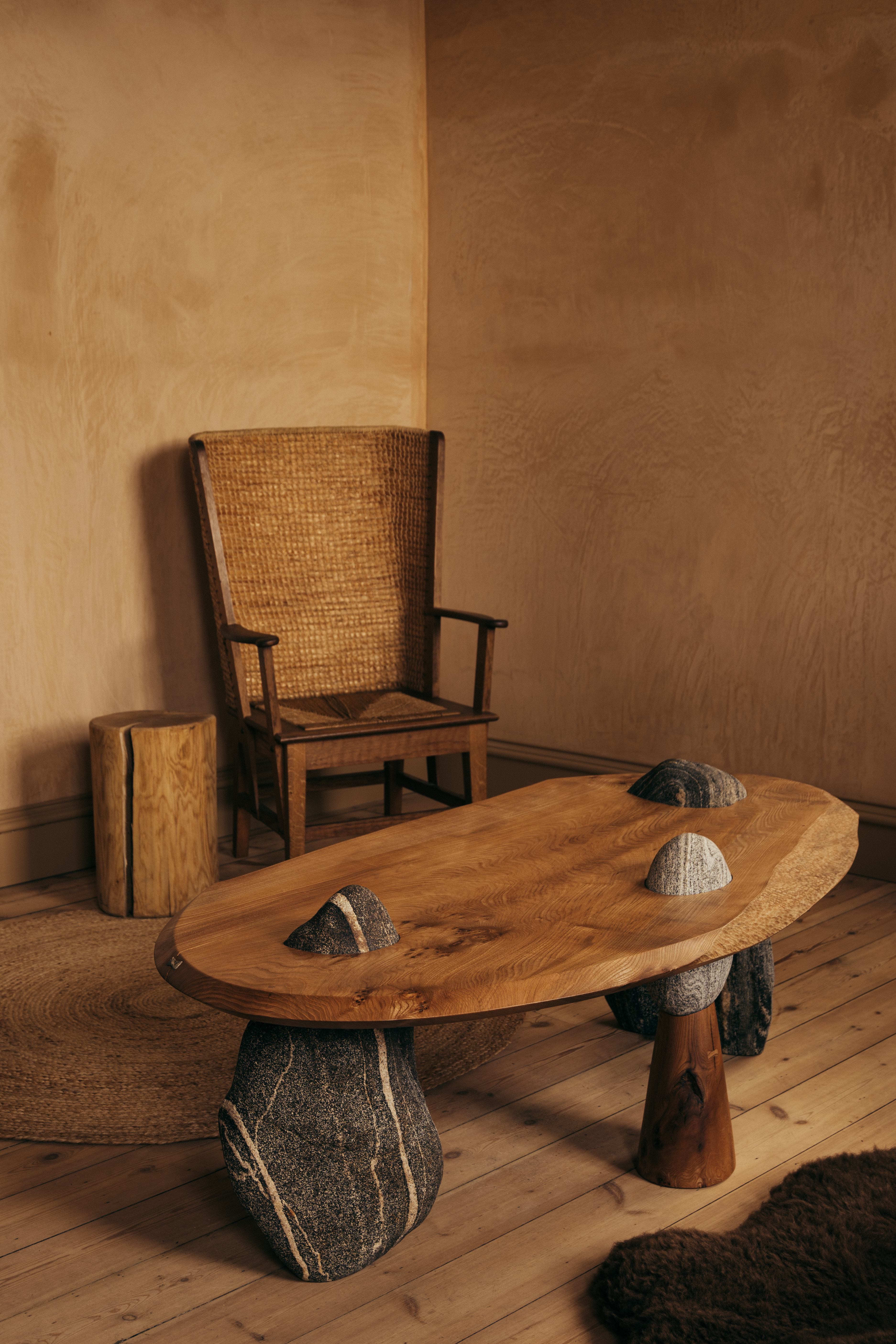
There's a smoothness and sleekness to this interpretation of post-modernist furniture design that grounds it in the 80s, but to marry with modern design sensibilities, there's a take on this idea that feels much more organic and raw, too.
The design above, created by furniture designer and sculptor Oliver Spendley, presented in contemporary craft gallery Bard, presents a similar idea, but with a very different materiality.
"We’ve noticed a great desire for materials to look and feel very like themselves," says James Stevens, co-founder of Bard. "Whether stone, wood, metal, or ceramic, people tend to gravitate towards the rougher, more organic states and finishes in place of those that are more polished or refined."
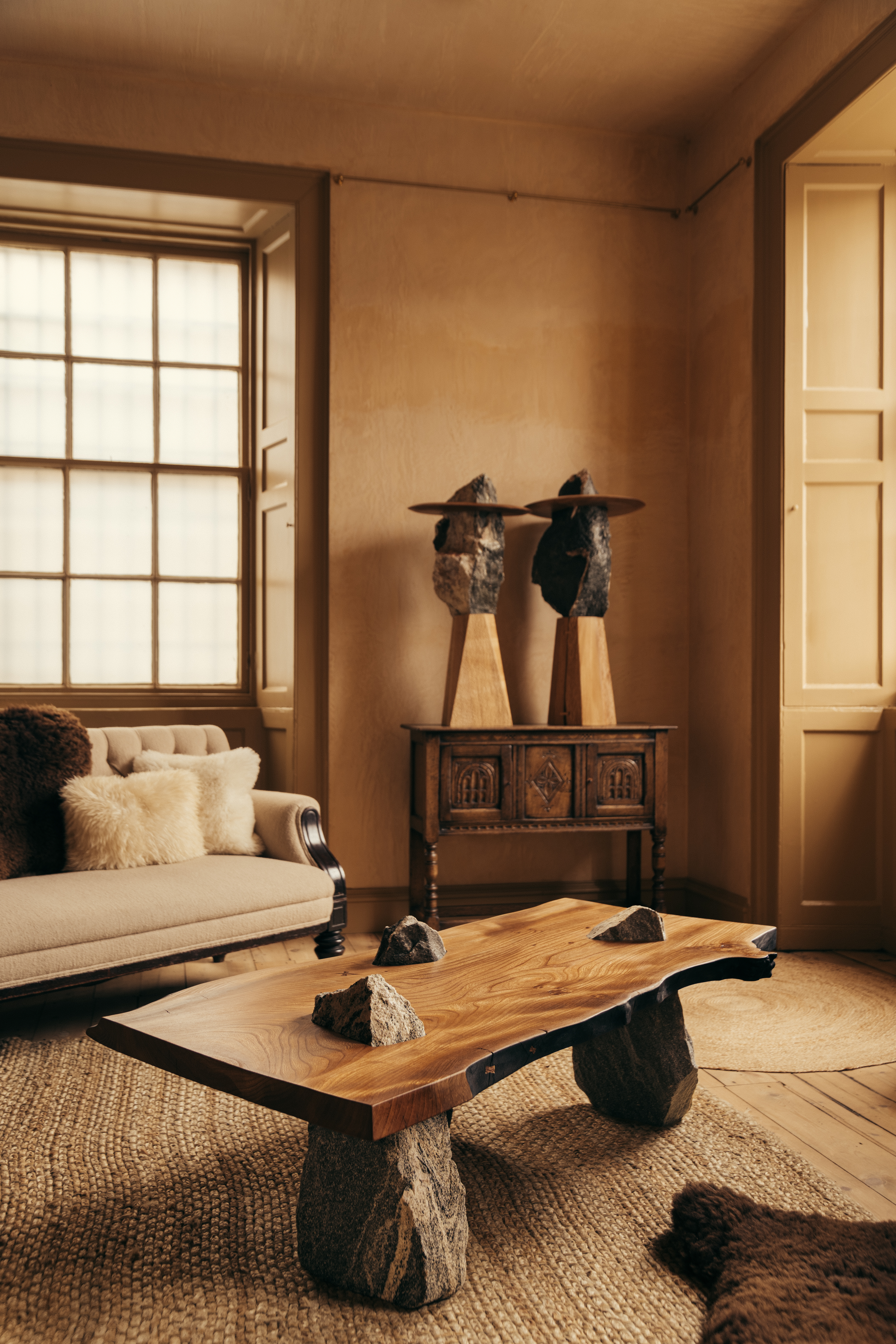
But while there is a rawness to a design such as this, it's far from primitive in its craft — they're designs that are put together with expert craftspersonship, down to the finest details.
"The balance of raw and refined is powerful; the one serves to intensify the other — and this tension is what makes Oliver’s work in particular so compelling," James says. "These are works that could only be made by the strange ingenuity of a human imagination and hand. As we face encroaching possibility of our humanity being subsumed by machine and artificial intelligence, we feel a greater tug towards the alchemy and magic of such works, and craft in general. They are pleasing, uncanny and reassuringly human."
And that's what it boils down to. Designs such as these, whether the sleek post-modern ideas or raw, handcrafted pieces we've spotlighted, aren't based in the usual perfunctory nature of furniture that sees legs and bases as an afterthought for structural integrity alone.
It's a testament to our humanity, our search for joy, for the unexpected. It flips the table, as it were — business up top, party down below.







